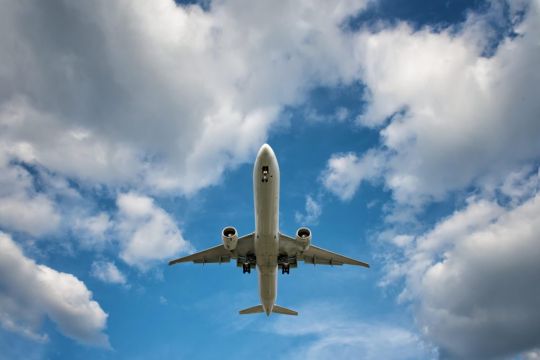Taxing fuel is the most effective way to reduce carbon emissions in the aviation sector, according to the Economic and Social Research Institute (ESRI).
In a recent report, the ERSI stated that the best methods to lower emissions at the lowest cost to the economy or the aviation sector, are those which target CO2 directly.
Currently, under the EU Emissions Trading System (EU ETS), airlines are required to purchase emissions allowances to cover their emissions. However, they receive a large amount of these allowances at no cost.
According to the ERSI, removal of the EU ETS allowances, along with the taxing of kerosene fuel, are measures which will lead to the most significant emission reductions at the lowest cost to the Irish aviation industry.
New ESRI research shows that the most effective method of taxation, which leads to the greatest emission reductions at the lowest cost to the economy or the aviation sector, are those which target CO2 directly.https://t.co/GhB9dY243o pic.twitter.com/G8iJv5LEai
— ESRI Dublin (@ESRIDublin) December 15, 2021
Advertisement
Since 2005, the number of air passengers has increased by 60 per cent in the EU which has, in turn, created a major increase in aviation emissions. However, the ERSI study found that measures to cut emissions such as passenger taxation or charging VAT on flights would not be as effective as taxing fuel.
'Need for action'
The ERSI noted international developments such as Cop26 which have highlighted the “need for action” on carbon emissions.
Recent proposals from the EU include the ‘Fit for 55’ package which includes measures for cutting emissions in all sectors. Measures targeting aviation include a proposed introduction of a tax on fuel and a proposed change to the existing carbon pricing mechanism of the EU ETS for aviation.
“There is increasing commitment to decrease EU’s aviation emissions, and we can expect increasing taxation on aviation,” said the ESRI’s Kelly de Bruin.
“However, even if the recently proposed EU policies come into force, impacts on the emission reduction will be small without an increase in the ETS price.
“Taking further policy actions, on the other hand, such as a passenger tax, would be harder in the short run due to the harsh impacts of the Covid-19 crisis on the industry and less cost-effective.
“In the case of Ireland, as a small island State, the lack of substitutes for aviation requires in-depth considerations of further policy actions.”
Pandemic decline
The ERSI recommendations come as the latest figures show aviation activity still remains below pre-pandemic levels.
According to figures from the Central Statistics Office (CSO), 2.1 million more passengers used Irish airports in Q3 of 2021 compared with Q3 of 2020. However, passenger numbers still remain 69 per cent below 2019 levels.
Number of flights to and from Irish airports increase compared to 2020 levels but remain below 2019 levelshttps://t.co/WWFe9E0Lyh #CSOIreland #Ireland #Tourism #Travel #Holidays #LoveIreland #OverseasTravel #Transport pic.twitter.com/9RoX00gDvD
— Central Statistics Office Ireland (@CSOIreland) December 15, 2021
The number of flights to and from Irish airports rose by 8,461 flights compared with the same period in 2020.
Figures show nine out of every 10 passengers on international flights were travelling to or from Europe. Within Europe, the United Kingdom and Spain were the most popular routes.
Meanwhile, outside of Europe the most popular routes were to or from the US.







